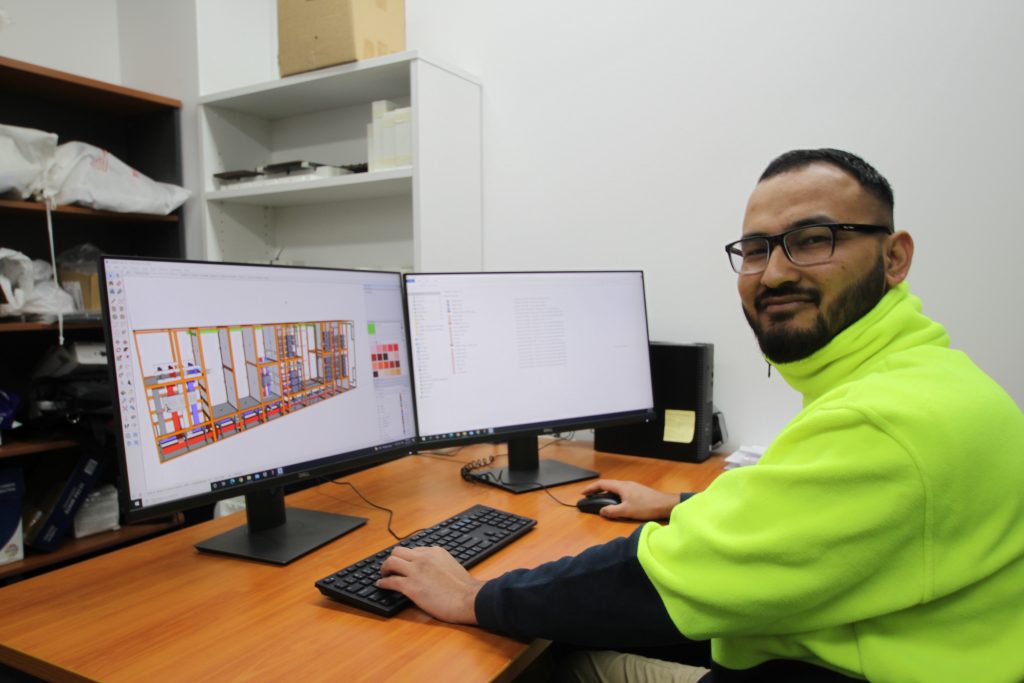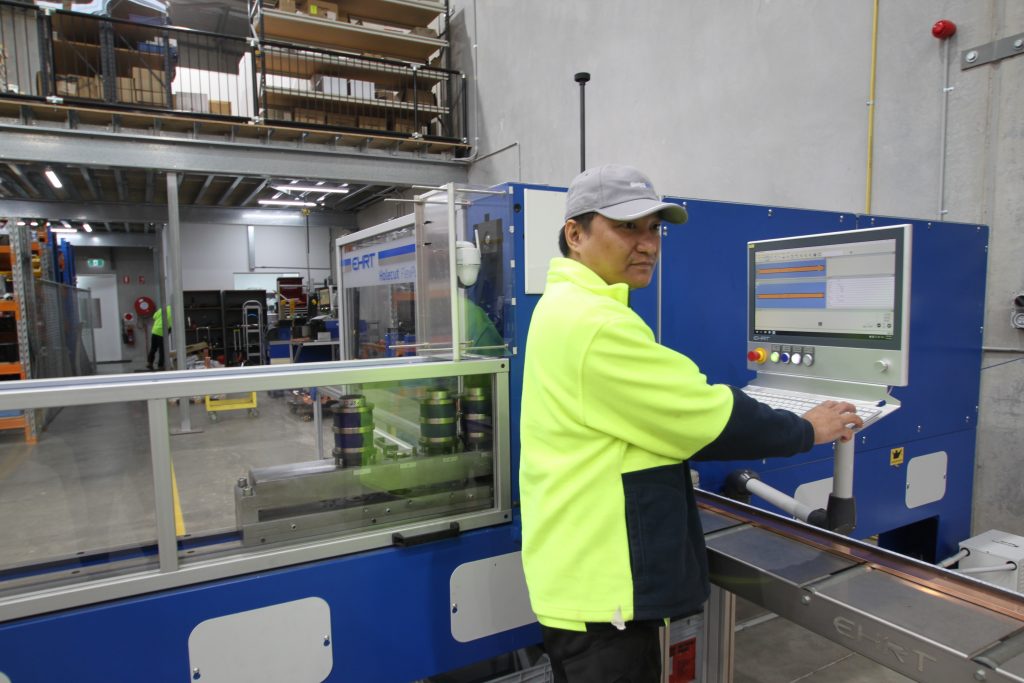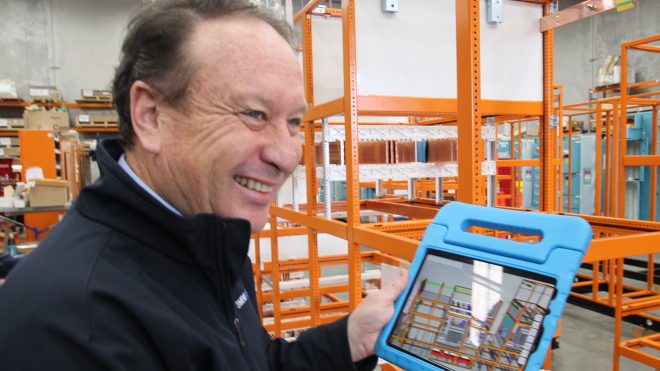Fuji SMBE Macquarie Pty Ltd has completed its move into a new HQ at Prestons in Sydney with the implementation of smart manufacturing technology in which it uses 3D modelling to design its products on-screen, then build them via iPad to physical reality.
Fuji SMBE Macquarie has developed its unique 3D model-and-build technology in-house to run its entire business, ensuring continuous manufacturing, precision, and speed while eliminating repetitive stop-start measure-and-build procedures that cost time and money.
“Recent disruptions from Covid, supply chains, and international tensions show just how important it is for local manufacturers to be innovative and self-reliant. We were planning our technology initiatives before much of this disruption happened, but our timing is particularly relevant today,” says Fuji SMBE Macquarie Director, Peter Silsby.

From 3D modelling shown above, to busbar manufacturing, shown below. Every cut and punched busbar component fits first time, every time.

“The whole advanced manufacturing process has come together with our move to our new premises, where we recently invested in busbar machinery, which is the last piece in our 3D production jigsaw by which processes designed on screen and transferred directly to production reality, every component is premade prior to starting the build.”
“The 3D modelling is the key to how our entire business operates now – we use it for every switchboard. I believe no other manufacturer is doing this – and our system is all in- house developed. We have invested in people and processes to arrive at a far more efficient future for our customers.”
Fuji SMBE Macquarie’s 3D process
The Fuji SMBE Macquarie process involves:
- From the 3D model, busbars are made prior to starting switchboard manufacture, so they are ready to fit into the streamlined process.
- From the 3D model, modular switchboard system components are precision punched prior to starting overall manufacture and assembly – again, curtailing delay while ensuring consistency and precision.
- From the 3D model, busbar supports also are ordered prior to starting manufacture.
- Factory workers use iPad technology to guide the assembly, streamlining the assembly process and enabling production teams to view the whole process as it progresses on-screen.
- 3D detail can also be shared with electrical contractors to insert in their Revit models for the project in hand.
- The streamlined process eliminates traditional measure up shutdowns and delay for measuring up when modifying switchboards on site.
“We can make the parts from the original 3D model then take them to site, where they will fit every time, because they are made so accurately.”
“Additionally, we developed a database for our projects which captures labour hours using a QR code system, to which an employee logs on when staring work each day or logs off when moving between projects. Using labour hours as our most important KPI, we can track and ensure our efficiencies throughout the entire process.”
“Compliance to proper statutory Standards is also more easily controlled, because it is locked in at the design stage for the 3D model,” says Peter Silsby, who promotes NESMA (National Electrical Switchboard Manufacturers Association) as the central organisation providing technical support and explanation of the ramifications of important statutory Standards changes, such as the latest Standard 61439.
NESMA campaigns to industry groups such as consultants, inspectors, contractors, and switchboard manufacturers to ensure a level playing field, on which all are working according to the rules and tendering according to the required standards. He also assists NESMA in its ongoing education on technical and safety issues, bringing to manufacturers, staff and trainees the latest it its ongoing advances in technologies, training and Standards.
“With this major 3D advance developed and engineered in-house, our own team’s achievement is an example of how committed manufacturers can benefit their customers, their team, their suppliers, and enrich the overall abilities of the industry,” he says.

